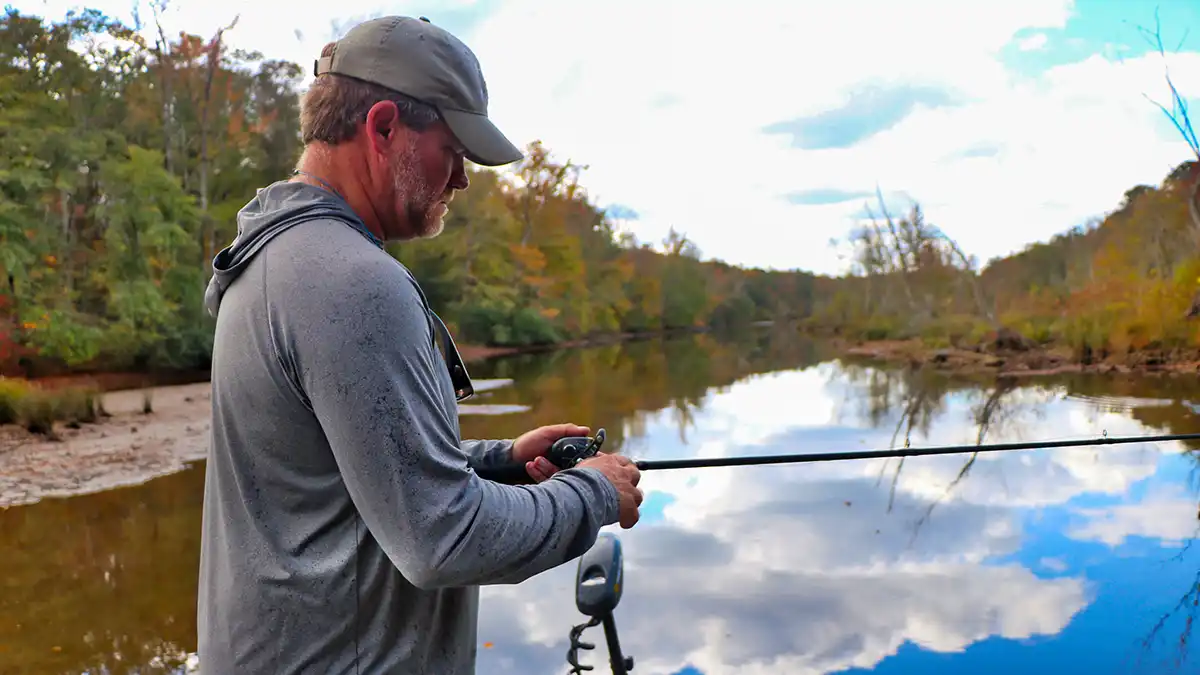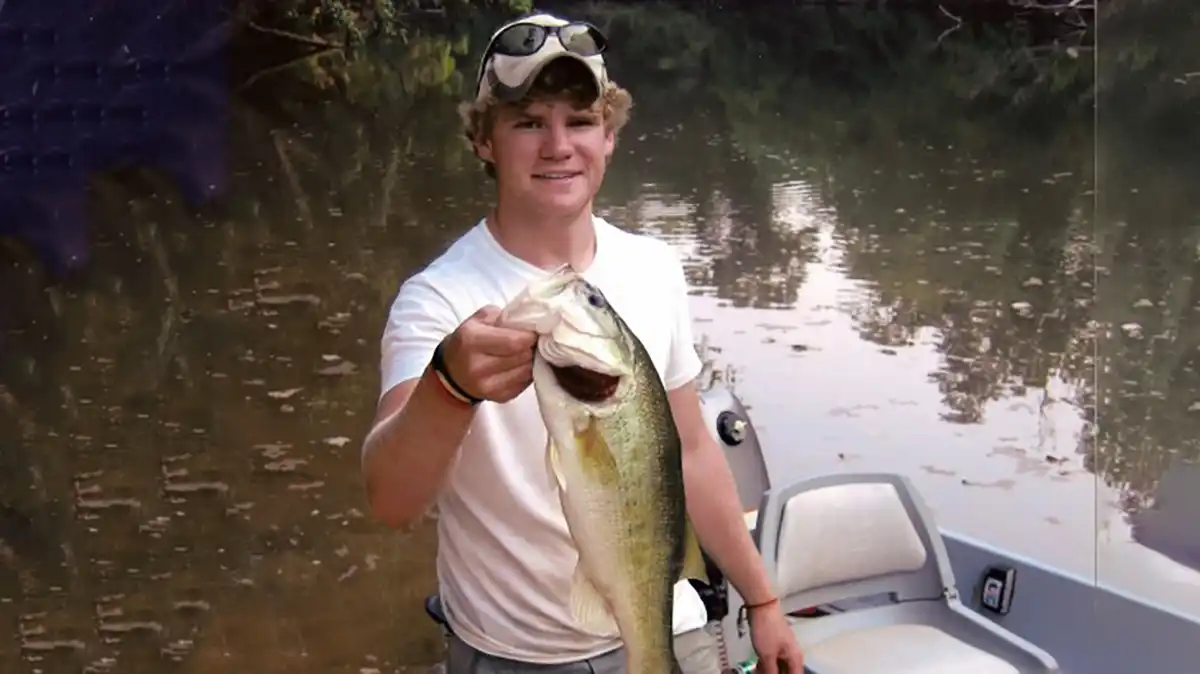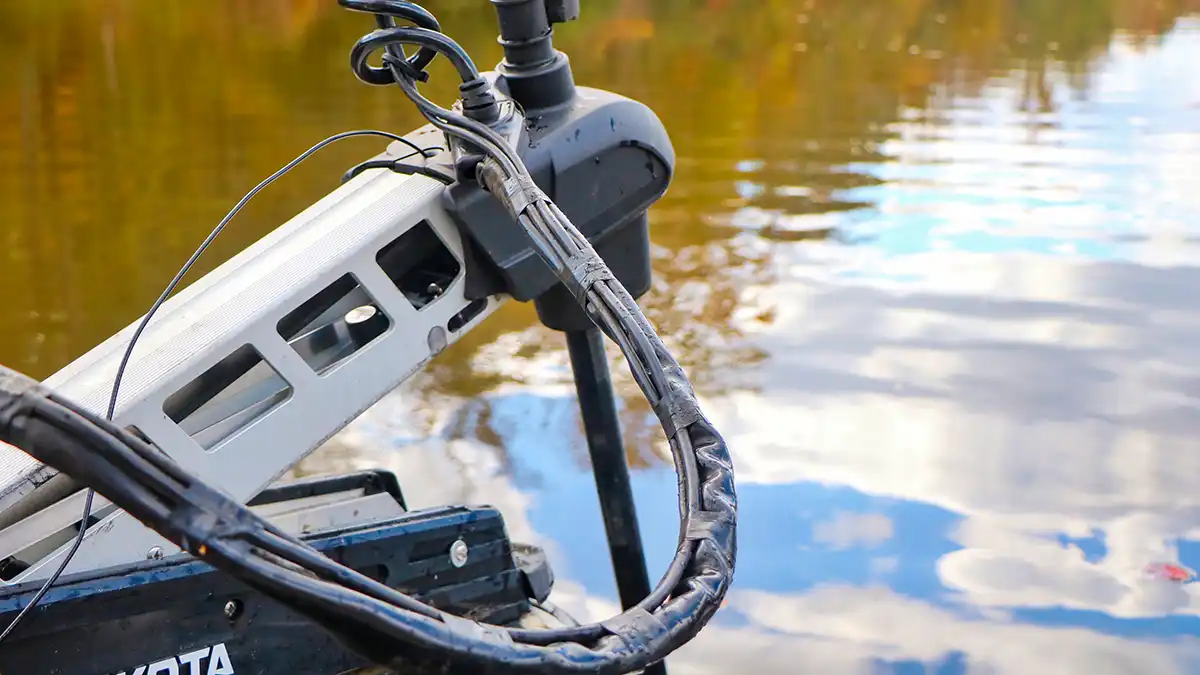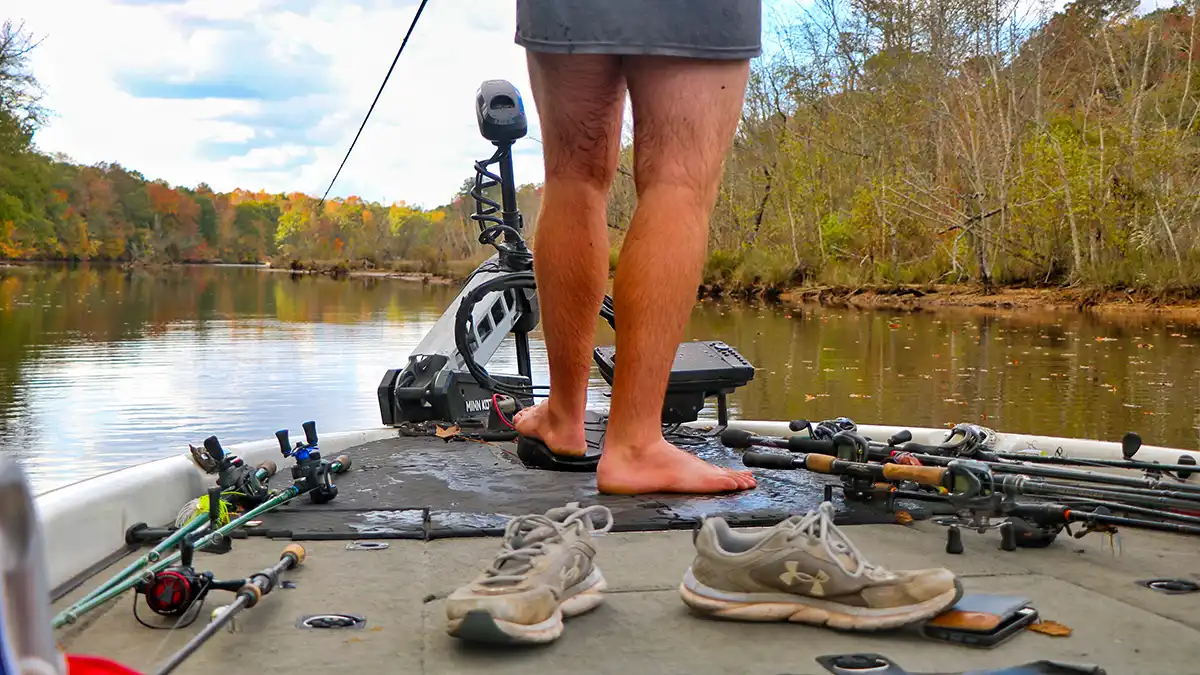I was born and raised in shallow fishing backwaters—like super shallow. It’s what my dad first learned to do, so it’s what he first taught me. While pushing my boat recently, after having beached it on a sandbar with my trolling motor, I had the idea come to me to write a piece on how to access super shallow fishing backwaters in a bass boat.
Dad’s affinity for the shallows came from how he fished as a kid, walking the banks of ponds and rivers and wading through creeks, dad learned to fish while targeting bass that rarely saw artificial lures. As he moved to an aluminum boat in his 20s and eventually to a fiberglass boat in his 30s, he couldn’t shake the urge to venture as far back into these same creeks as he could, trying to connect the dots between the angler he was at the time and the angler he had been.
Picking his way into shallow creeks and finding little hidey hole ponds, dad had a lot of success fishing throughout Alabama; his most noteworthy examples being a 1988 Alabama B.A.S,S. Nation State Championship victory on the Alabama river fishing an acre-or-two oxbow off the main river, and a 2002 State Championship in less than 3 feet of water on his home waters of Lake Martin.
These are the roots I sprung up from. Shallow water is my heritage, with my biggest tournament bag as proof— 29 pounds, 8 ounces coming in less than 4 feet of water on Lake Okeechobee in the 2013 Bassmaster Wildcard.
But 3 to 4 feet isn’t even really that shallow in our eyes. My dad has often made the joke that his idea of a ledge is the inside of a flooded cow trail to the outside. And that all he needs to catch a fish is a light rain on the interstate. He’s quite full of it, but backs it up quite regularly all the same.
There are a lot of things we do to find and gain access to these shallow waters sweet spots. Some that are easy and free, and some that are expensive and more intense. To get as many in as possible, we’re going to work through a “laundry list” of ideas quickly.
1. Don’t fill up with gas
Anytime you can eliminate weight from your boat, you’ll be able to fish shallower. A gallon of gas weighs about 6 pounds. Many bass boats can hold upwards of 50 gallons of gas. That’s 300 pounds of added weight, which can make your boat sit inches lower in the water.
2. Don’t fill up livewells
You should never really put water into your livewells until you catch your first keeper. Hauling around water straight out of the gate will cut down on your gas mileage and reduce your speed. If water flows into your livewell on empty, close your livewells and pump the water out. Many livewells can easily hold 30 gallons of water. At 8 pounds a gallon, that’s another 240 pounds and is like having another full-grown man in the boat.
3. Pump out livewells
If you do have fish in the livewell already, you can still safely pump out some of the water and then put your pumps on recirculate. Recirculate is a good idea anyways in shallow water, as the intakes will often suck up mud and silt, which can mess up the pumps and make it harder for the fish to filter oxygen out of the water.
4. Remove unnecessary tackle
Focusing on weight again, most of us have tackle in our boats that we’ll never use. Any way to lighten the load when trying to access shallow water will help, and many of us could easily remove a hundred pounds of tackle and other gear.
5. Set trolling motor speed correctly
There’s an ideal speed you can set most foot-controlled trolling motors at to where the trolling motor will stay half raised as long as you’re going straight. Mine is 6 out of 10. At this setting I can keep my trolling motor continuously running with the prop barely in the water, without having to hold it up with the pull cord.
6. Prop up the trolling motor
You can also prop your trolling motor up using your measuring board, 2×4, and empty pop bottle with the lid back on or something else wedged in between the arm and the bracket. This allows you to run the trolling motor on a lower speed, as well as turn it left and right (something you’re unable to do with the previous tip). Just be careful not to let the ruler fall in the water if you increase the speed of the motor and it kicks up, though you should be able to find it if it does.
7. Raise trolling motor head up
Foot-controlled trolling motors as well as those controlled by a tiller can be lifted vertically using a screw-locking mechanism. Make sure your trolling motor is all the way up.
8. Be ready to push
While exiting the boat to gain access to water is often illegal in tournaments, you can push your way out of a shallow water area no matter what. It’s a good idea to have a spare set of clothes with you for this, especially in cold weather situations. And you’ll want to test the bottom composition with your rod tip before bailing off in the water, as you can sink down multiple feet into muck and silt trying to push.
9. Push pole
A push pole is a great tool to have when trying to access and leave shallow water. Though you can’t leave your boat to gain access to water in most tournaments, you can use a push pole to do it. And the poles really help in situations where the water is too cold or too mucky to get out and push anyways.
10. Keep momentum
If you’re trying to power your way out of an area on the trolling motor, try not to stop or lose momentum. Mucky bottoms can form a suction on the boat and make it all but impossible to move. Try to keep going if possible, on your way out. Don’t do this on the way in, as you’ll likely get yourself even more stuck, unless you can point your motor to obviously deeper water.
11. Find a few extra inches of water
Visually looking for deeper water may seem like a no-brainer, but it’s sometimes hard to tell with the naked eye if water is a mere inch or two deeper in a given direction. And the slightest difference is all it takes to avoid getting stuck.
12. Use satellite imaging
You can use satellite imaging to help you find the slightly deeper water, especially on lakes with a winter drawdown. These images are far more effective at helping you pick your way in and out of places than any kind of topographic mapping, when it comes down to only inches.
13. Don’t use big motor to push in
As a last resort, you can sometimes power your way out of a super shallow spot with the big motor, especially in a mucky bottom situation where you can’t get out and push. But you’ll likely never want to power your way into a place with the big motor, as you will get stucker than stuck. #beentheredonethat
14. Use your weight well
If you have multiple people in the boat, it can help to move one person around while the other pushes or runs the trolling motor. The water is usually a little deeper somewhere under the boat. Moving the other person to that area can be enough to free the stuck portion of the hull. Planting your feet wide and rocking back and forth is another way to help break the suction and get a boat unstuck.
15. Keep a fishing log
On lakes with winter drawdowns, it’s really important to log what the water levels are. This will help you remember the water levels on days when you could or could not get into places, instead of running 25 miles only to find out the water is already too far down or not yet high enough to gain access to the ole honey-hole.
16. Cut limbs back
If legal, per the tournament rules or local laws, you can cut back limbs and fallen trees to gain access to areas. David Dudley did this to win $700,000 in the 2002 FLW Ranger M1 event.
17. Hydraulic jackplate
One of the pricier tips is to get a hydraulic jackplate. I’ve had a couple of these over the years and could get on plane in less than 2 feet of water with a 20-foot fiberglass boat by trimming the motor down, the jack plate up and cutting a hard semicircle while giving it full throttle. It was pretty incredible.
18. Consider lithium batteries
This last tip is on the pricey side, but lithium batteries can again eliminate a lot of weight. A bass boat equipped with a 36-volt trolling motor and an outboard engine requires a couple hundred pounds of traditional lead acid batteries. Swapping to lithium batteries can cut 75% of that weight.
So that’s my list of things I’ve done or am willing to do to gain access to waters that others may never get to. There’s been a lot of derbies won by finding a hidey hole off the beaten path so the extra blood sweat and tears can pay off big time whether you’re talking tournament wins or just finding the best honey hole you’ve ever found.
















